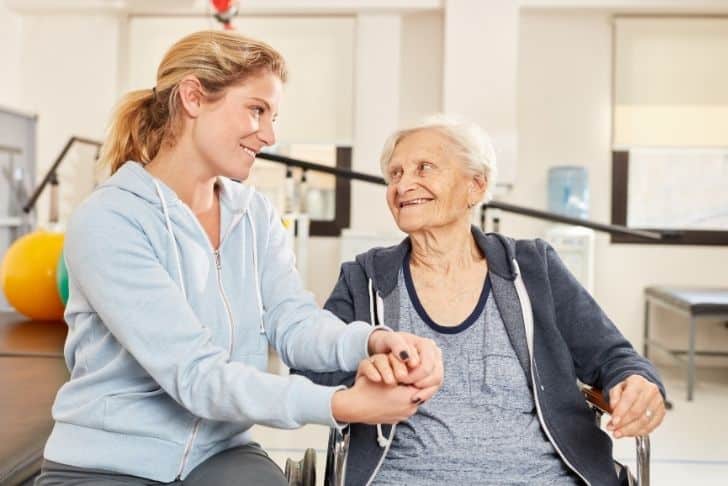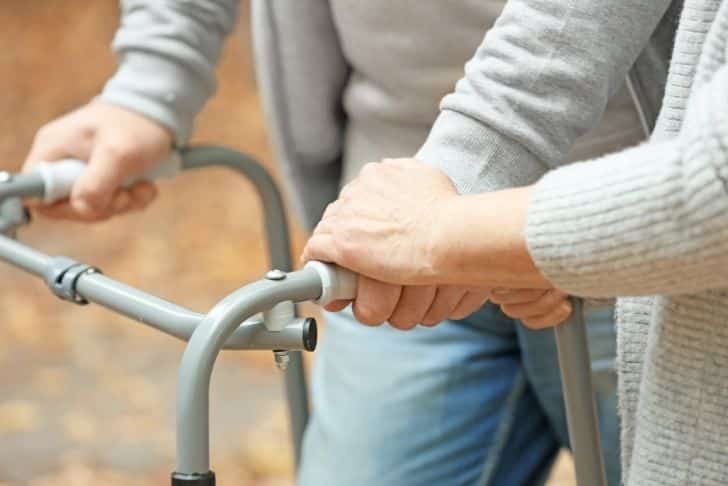“Understanding Risks and Proper use of mobility aids” fascinates with a comprehensive look into how mobility aids — running the gamut from canes and wheelchairs to guide dogs — are transforming the lives of those grappling with movement issues. The article underscores the vitality of these tools in offering autonomy, alleviating pain, and augmenting self-esteem for users, who could range from adults at risk of falling or battling disabilities, to individuals recuperating from surgeries. It stresses the significance of considering the wide assortment of devices available, each with its unique advantages and potential drawbacks, and sheds light on why modifications to your living or office space, may be necessary for safer navigation. The piece also balances out these myriad benefits by highlighting the potential risks of improper use, therefore stressing the importance of professional guidance in utilizing these mobility aids.
What are Mobility Aids?
Definition and Purpose of Mobility Aids
mobility aids are devices designed to help people who have difficulty moving around. They offer greater freedom and independence to individuals who would otherwise struggle with mobility. The primary purpose of these aids is to improve the quality of life for those who use them, enabling easier movement and promoting independence.
Demographics Who Commonly Use Mobility Aids
These mobility aids are commonly used by a variety of individuals. Those with physical disabilities or conditions such as arthritis and cerebral palsy find these mobility aids particularly useful. Additionally, individuals recovering from surgery or injuries that temporarily restrict their mobility also benefit from these devices. Older adults who may be at risk of falling due to age-related frailty or balance difficulties often utilize mobility aids to remain independently active in their daily routines.
Benefits of Using Mobility Aids
Mobility aids offer a plethora of benefits. The most apparent is increased independence, offering individuals the freedom to navigate their environments on their own terms. Reduced pain is another significant benefit, as these aids can relieve the pressure exerted on injured or weak body parts. Additionally, enhanced confidence and self-esteem often follow from the freedom and empowerment these aids can provide.
Various Types of Mobility Aids
Mobility Aids for Stability and Balance: Canes, Crutches, Walkers
canes, crutches, and walkers form the backbone of mobility aids used for increasing stability and balance. Canes provide a simple, portable solution for those who need minor help with balance, while crutches offer more support by transferring weight from lower limbs to the upper body. Walkers, sometimes referred to as Zimmer frames, consist of a metal framework with four legs that provide inimitable support and stability.
Mobility Aids for Non-Walkers: Wheelchairs and Scooters
For individuals who cannot put weight on their lower limbs or are unable to walk, wheelchairs and scooters offer invaluable mobility assistance. Wheelchairs allow users to move without bearing any weight on their lower limbs, typically controlled by the user’s upper body or by electrical assistance. Mobility scooters are similar but offer a seated scooter with 3, 4, or 5 wheels, controlled with handlebars or a steering wheel.
Mobility Aids for the Visually-Impaired: Guide Dogs
For those visually impaired or blind, guide dogs serve as an essential mobility aid. These specially trained service animals assist people in navigating obstacles, improving their mobility, and contributing towards independent living.

Deep Dive Into Canes
How Canes Assist with Mobility
Canes are primarily used to support the body’s weight and provide extra balance. They act as an additional point of contact with the ground, distributing weight away from the lower body and increasing stability.
Potential Risks and Dangers Related to Canes
Despite their benefits, canes do have some drawbacks. The main risk arises from improper use, which can result in increased pressure on the hands and wrists. Over time, this can lead to unnecessary strain and injury.
Proper Use of Canes
Correct usage of a cane is vital to reap its benefits and avoid potential risks. Always match the cane to your height and strength requirements, and ensure your wrist aligns with the top of the cane while standing upright. Keep the cane on your strong side and move it forward as you step with the opposite foot.
Understanding Crutches
Function and Benefits of Using Crutches
Crutches help transfer weight from the lower body to the upper body. They provide great support by relieving injured or weakened lower limbs from supporting the full weight of the body, helping with balance and providing greater freedom of movement.
Risks Involved with Crutches Usage
Risks with crutches arise largely from incorrect usage or wrong sizing. Poorly adjusted crutches can result in injuries due to falls, or crutch paralysis – a condition where pressure on nerves in the armpit causes arm weakness.
Crutches: Proper Usage Techniques
Proper use of crutches requires the correct size. The handgrip should line up with your hip while the top of the crutch should be 1-2 inches below your armpit when standing upright. When walking, lean on the handles rather than the tops to avoid pressure on your armpits.

The Utility of Walkers
How Walkers Provide Support and Stability
Walkers provide excellent support and stability, particularly for those who require more support than a cane or crutches can provide. The four point framework ensures maximum stability and safety.
Possible Injuries from Improper Use of Walkers
Much like other mobility aids, incorrect use can result in injuries. The most common issue arises from using a walker that is too high or too low, leading to posture issues and potential falls.
Best Practices for Walker Use
Always adjust walker height so that it reaches the crease in your wrist when you stand upright. Keep your back straight and look ahead when you walk, ensuring you maintain a slow, steady pace to prevent falls.
Usage and Risks Linked to Wheelchairs
The Function and Importance of Wheelchairs
Wheelchairs are a crucial mobility aid for those who cannot walk or bear weight on their lower limbs. They offer a versatile mobility solution, especially when used in combination with wheelchair-accessible infrastructure.
Wheelchair Related Hazards
As with all mobility aids, improper use of wheelchairs can lead to various risks. These include falling from the wheelchair due to incorrect seating, injuries from incorrect handling of the wheelchair, and repetitive strain injuries from overexertion.
Recommended Use of Wheelchairs
Users must ensure correct seating and posture in wheelchairs to avoid discomfort and injuries. Regular maintenance checks are also necessary to ensure the safety and longevity of the wheelchair. In cases of manual wheelchairs, correct propulsion techniques must be adopted to avoid strain injuries.

The Role of Mobility Scooters
Benefits and Features of Mobility Scooters
Mobility scooters are powerful aids that help people with mobility challenges navigate long distances. They are controlled by handlebars or a steering wheel, making them easier to operate for people with weak upper limbs.
Potential Risks and Issues Linked to Mobility Scooters
Despite their advantages, mobility scooters can pose risks if used improperly. The most common hazards include tipping over from excessive speed, misjudging clearance space, or navigating challenging terrains.
Guidelines for Optimal Mobility Scooter Usage
To minimize risks of accidents, one must follow certain guidelines. Remember to always drive within the scooter’s maximum speed limit, be aware of your surroundings, and avoid navigating on uneven or risky terrains. Regular maintenance checks are also important to ensure the scooter’s safe operation.
Significance of Guide Dogs
Role of Guide Dogs in Assisting the Visually Impaired
Guide dogs play a critical role in assisting visually impaired people, helping them navigate obstacles and more easily traverse their environment. These dogs are specially trained to provide safe navigation and offer enhanced independence to their handlers.
Challenges and Considerations in Using Guide Dogs
While guide dogs can be tremendously beneficial, they also require significant time and commitment. Maintaining dog’s health, managing their training, and being conscious about dog-friendly environments are musts.
Proper Use and Care for Guide Dogs
It is crucial to ensure ongoing training for guide dogs to maintain their skill and effectiveness. Regular veterinary care to ensure their health and well-being is equally important.
Home and Office Modifications for Improved Mobility
The Necessity and Benefits of Home or Office Modifications
Home or office modifications can make a world of difference to individuals using mobility aids. Installing ramps, stair lifts, handrails and adjustable desks can create a safer and more navigable environment.
Possible Risks in a Non-Modified Environment
A non-modified environment poses several risks for people with mobility impairments. Obstacles like stairs, uneven surfaces, or narrow corridors can cause accidents and impede mobility.
Guidelines for Implementing Safe Home and Office Modifications
To ensure proper modifications, always consider the specific needs of the individual. The installation of ramps, handrails, and lifts should be done by professionals to ensure safety. Constant evaluation and adjustments are needed to keep the environment safe and user-friendly.
Overall Recommendations for Safe Usage
Prevention of Improper Use
Education is the best prevention for improper use of mobility aids. Learning correct techniques from certified professionals like physical therapists, or from credible sources, can go a long way in ensuring safety.
Tips for Correcting Misuse
If you realize you’ve been misusing a mobility aid, don’t panic! Reach out to a physical therapist or a trained professional who can show you the correct way to use the aid. Remember, it’s never too late to learn the right technique.
Emphasizing the Role of Physical Therapists and Doctors in Teaching Safe Mobility Aid Practices
Physical therapists and doctors play a pivotal role in teaching safe practices regarding mobility aids. They can provide advice tailored to your specific needs, teach correct usage methods, and offer ongoing support. Always consult these professionals when starting to use a new mobility aid.
